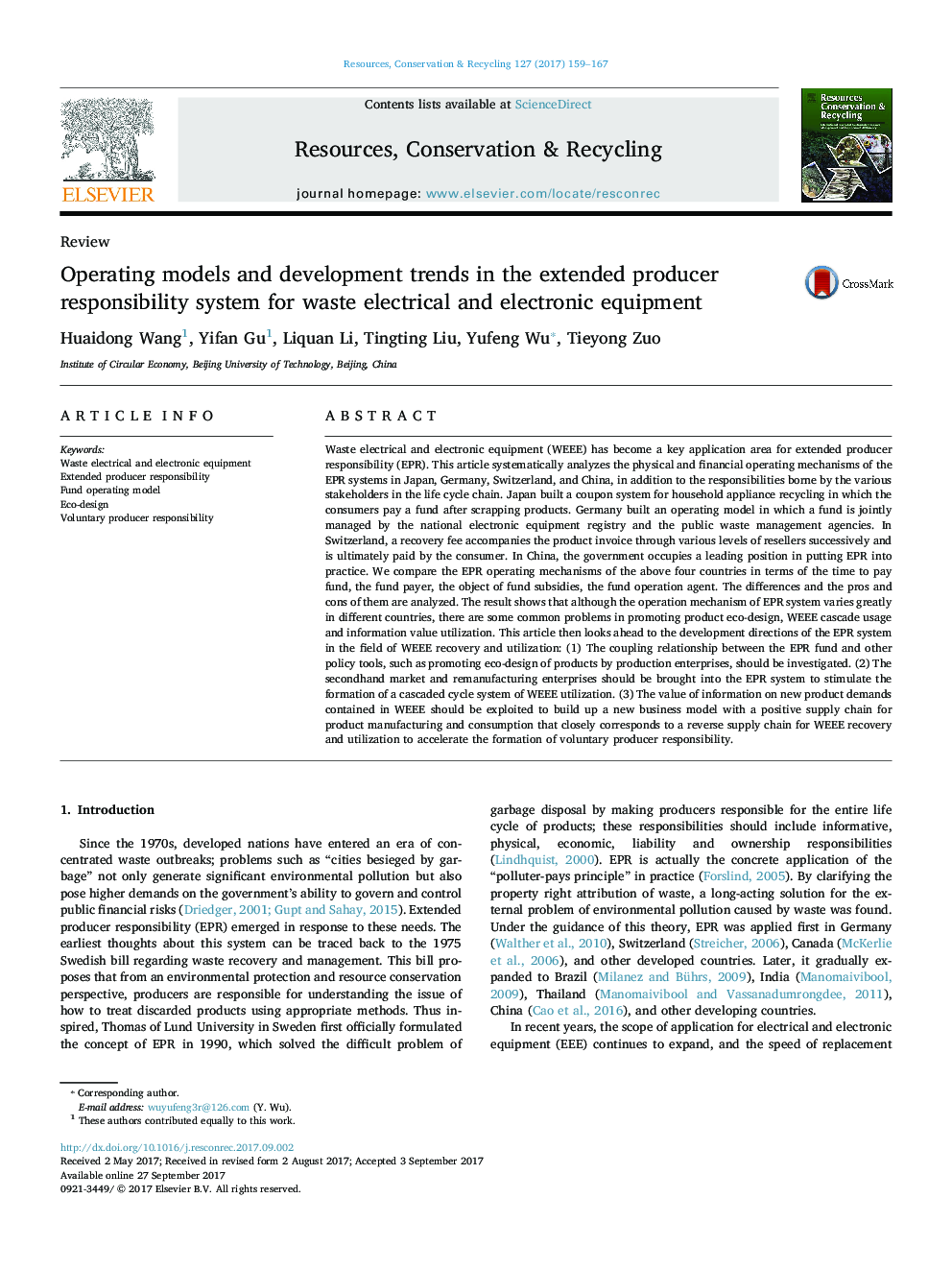| کد مقاله | کد نشریه | سال انتشار | مقاله انگلیسی | نسخه تمام متن |
|---|---|---|---|---|
| 5118596 | 1485665 | 2017 | 9 صفحه PDF | دانلود رایگان |
- An overview of EPR systems in Japan, Germany, Switzerland, China is provided.
- The development directions of EPR in the field of WEEE recycling are analyzed.
- The coupling relationship between the EPR fund and other policies is investigated.
- More attention should be devoted to stimulate product reuse and remanufacturing.
- Voluntary producer responsibility is built to tap the potential supply chain value.
Waste electrical and electronic equipment (WEEE) has become a key application area for extended producer responsibility (EPR). This article systematically analyzes the physical and financial operating mechanisms of the EPR systems in Japan, Germany, Switzerland, and China, in addition to the responsibilities borne by the various stakeholders in the life cycle chain. Japan built a coupon system for household appliance recycling in which the consumers pay a fund after scrapping products. Germany built an operating model in which a fund is jointly managed by the national electronic equipment registry and the public waste management agencies. In Switzerland, a recovery fee accompanies the product invoice through various levels of resellers successively and is ultimately paid by the consumer. In China, the government occupies a leading position in putting EPR into practice. We compare the EPR operating mechanisms of the above four countries in terms of the time to pay fund, the fund payer, the object of fund subsidies, the fund operation agent. The differences and the pros and cons of them are analyzed. The result shows that although the operation mechanism of EPR system varies greatly in different countries, there are some common problems in promoting product eco-design, WEEE cascade usage and information value utilization. This article then looks ahead to the development directions of the EPR system in the field of WEEE recovery and utilization: (1) The coupling relationship between the EPR fund and other policy tools, such as promoting eco-design of products by production enterprises, should be investigated. (2) The secondhand market and remanufacturing enterprises should be brought into the EPR system to stimulate the formation of a cascaded cycle system of WEEE utilization. (3) The value of information on new product demands contained in WEEE should be exploited to build up a new business model with a positive supply chain for product manufacturing and consumption that closely corresponds to a reverse supply chain for WEEE recovery and utilization to accelerate the formation of voluntary producer responsibility.
Journal: Resources, Conservation and Recycling - Volume 127, December 2017, Pages 159-167
